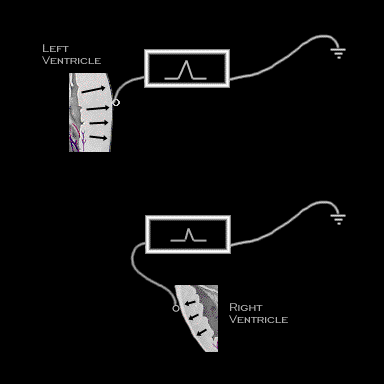
Extending this concept one step further, consider the heart with its dissimilar ventricular dimensions. If the ventricles were to be isolated and a signal recorded by a unipolar electrode located on the epicardial surface of each ventricle as it is depolarized from the endocardium to the epicardium, a positive wave form would be generated from each location. However, that recorded over the left ventricle would be of greater magnitude than that generated from the right ventricle because of the greater muscle mass of the left ventricle.
